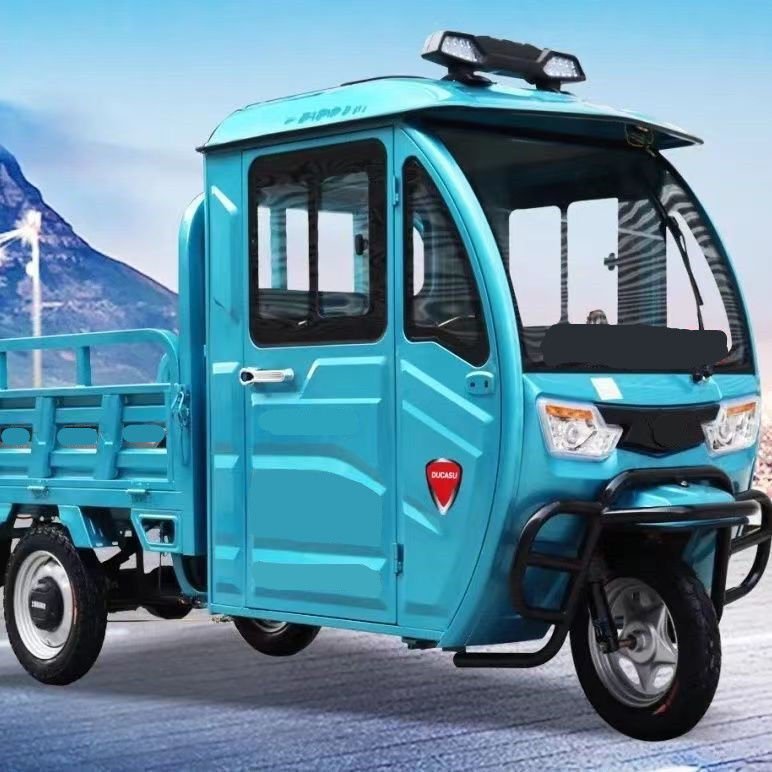Electric trikes, or electric tricycles, have become a popular choice for many looking for an eco-friendly and convenient mode of transportation. Whether you’re an avid commuter, a recreational rider, or someone seeking an alternative to traditional mobility devices, an triciclo elétrico offers several advantages. However, one of the most important considerations for potential buyers is the lifespan of the electric tricycle battery. After all, a battery’s longevity directly impacts the efficiency and overall cost-effectiveness of your electric trike. So, how long does an electric trike battery last, and what factors should you consider when evaluating battery performance?

Understanding the Basics of Electric Trike Batteries
Before we dive into battery longevity, it’s important to understand the basics of how an electric trike operates. An electric trike uses a rechargeable battery to power an electric motor, which assists with pedaling or drives the vehicle entirely in some models. These batteries are typically lithium-ion, a common and efficient choice due to their ability to hold a charge, lightweight design, and long lifespan.
When discussing battery life, we aren’t just referring to how many years the battery will last, but also how many charging cycles it can endure. A “charging cycle” refers to one full discharge and recharge of the battery. Most modern electric tricycles can undergo hundreds of cycles before the battery’s performance begins to degrade.
The Average Lifespan of an Electric Trike Battery
Typically, the battery in an electric trike lasts between 3 to 5 years with regular use. However, the lifespan can vary based on several factors. One key factor is the quality of the electric trike manufacturer. Reputable manufacturers tend to use high-quality batteries that last longer, while cheaper models might use lower-quality cells that degrade faster.
On average, a well-maintained battery can support between 500 and 1,000 full charge cycles. This translates to an expected lifespan of anywhere from 2,000 to 5,000 miles of travel before the battery’s capacity drops significantly. After this, you may notice a reduction in the distance you can travel on a single charge or the amount of power the motor can deliver.
Factors That Affect Electric Trike Battery Life
Several factors influence the lifespan of an electric tricycle battery. Let’s explore some of the most important ones:
1. Battery Type and Quality
As mentioned earlier, lithium-ion batteries are the most commonly used in electric trikes due to their high energy density and longer lifespan. However, the quality of the battery itself plays a major role in how long it will last. Premium batteries from established electric trike manufacturers will generally last longer and offer better performance compared to cheaper, generic batteries.
2. Charging Habits
Your charging habits can significantly impact the lifespan of your battery. Frequent overcharging or discharging the battery to very low levels can reduce its overall life. It’s ideal to charge your electric trike battery when it’s around 20% to 30% remaining and unplug it when it reaches 80% to 90% to prolong its health. Most modern batteries are equipped with smart charging systems to prevent overcharging, but developing good charging practices can still make a difference.
3. Environmental Conditions
Temperature extremes can also affect battery life. Batteries perform best in moderate temperatures—typically between 50°F and 77°F (10°C to 25°C). If you regularly use your electric trike in hot climates or store it in very cold conditions, the battery might degrade more quickly. It’s advisable to store the trike in a cool, dry place and avoid using it in extreme weather.
4. Frequency of Use
How often you use your electric trike will influence the wear and tear on the battery. Frequent use with regular full discharges will naturally reduce the battery’s lifespan. If you only use your trike occasionally or for short distances, the battery may last longer because it undergoes fewer charge cycles.
5. Motor Usage
The power and type of motor you use also impact battery consumption. Trikes with more powerful motors or those used for hilly terrains will drain the battery faster, leading to a slightly shorter lifespan. Riders who use the motor for full power in every trip will likely see their battery degrade more quickly than those who use it only for assistance.
In conclusion, the electric trike battery is a key component of your electric trike’s overall performance. On average, you can expect a battery to last between 3 to 5 years, depending on factors like usage, maintenance, and environmental conditions. By purchasing a high-quality trike from a reputable electric trike manufacturer, using good charging habits, and taking care of your battery, you can ensure that your electric tricycle remains reliable and efficient for many years to come.